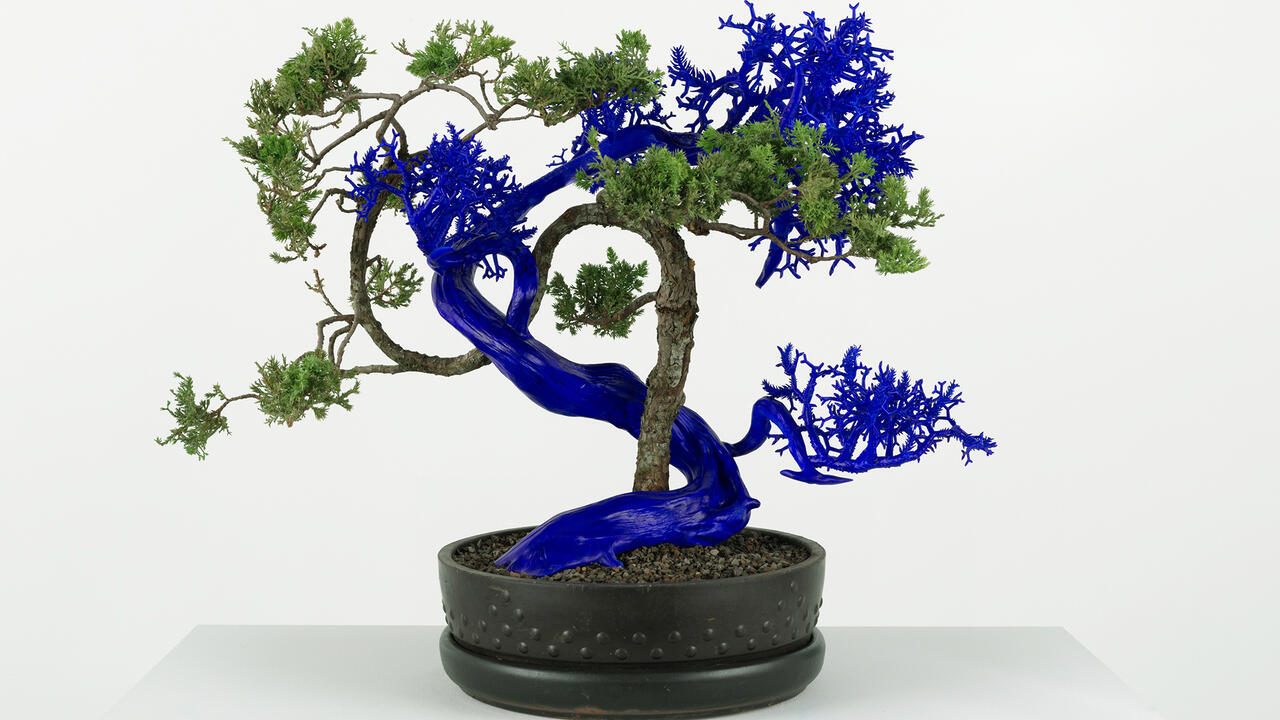Micro-Nation CAPACETE
Friedrich Petzel Gallery, New York, USA
Friedrich Petzel Gallery, New York, USA

The silvery black and white panorama of Sugar Loaf Mountain and Guanabara Bay, a gleaming ocean and the lights of Rio de Janeiro’s high-rises, has the dreamlike aura of an old postcard. Another image floats above this scene: a photograph of an envelope addressed to the Friedrich Petzel Gallery, with a return address that consists simply of the names of three artists – Gabriel Lester, Jean-Pascal Flavien and Ducha. This was the evocative poster/invitation for ‘Micro-Nation CAPACETE,’ a sampling of art works, ephemera and documentation exhibited to mark the ten-year anniversary of the Rio-based curatorial collective Capacete Entertainment. Its goal of using the city as an interdisciplinary laboratory for examining and documenting aesthetic, political and social processes in Brazil may sound daunting, but the Capacete ‘micro-nation’ has produced exuberant Conceptual work that would be unimaginable elsewhere.
Conceived by local and international artists, critics and curators (in her catalogue essay Teresa Riccardi speculates that participants now number over 1,000), Capacete projects often take the form of interventions that transform or reveal aspects of the urban environment, although some are executed elsewhere in Brazil or South America. The impresario is Helmut Batista, who founded Capacete Entertainment (first named Espaço P and Espaço Purplex) in July 1998 in an apartment in the Flamengo neighbourhood of Rio. Capacete means ‘helmet’, a cryptic moniker until one learns that it was inspired by a character in Jim Jarmusch’s Night on Earth (1991) – an immigrant New York cab driver named Helmut who is persistently called Helmet. This allusion carries a whiff of playful punning absurdity but also emphasizes the importance of fluid and subjective experience. As Riccardi writes, Capacete ‘[moves] around the area, trying to catch the essence of the ways its artists produce their work’. While forging a relationship with the art market on its own terms, it has pursued an array of strategies to reach a diverse audience, including residency programmes, travelling projects, a quarterly newspaper published until 2004, catalogues, a mobile office at the 2002 São Paulo Biennial and Capacete Cinema; it also collaborates with festivals and institutions.
For this exhibition Batista focused on works with a performative element. Greeting visitors – much as the statue welcomes tourists to Rio – was a photograph by Ducha of Rio’s famous Christ the Redeemer bathed in crimson light. Closer examination revealed figures at the statue’s base. In 2004 Ducha, who has completed multiple projects for Capacete, climbed Corcovado Mountain in order to place red filters over the white spotlights illuminating the revered monument, a slyly suggestive intervention that reached a metropolis-wide audience, until authorities stepped in and removed the gels. ‘I feel myself as inside a drawing,’ Batista remarks in the catalogue of this and other Ducha projects, which have included spending two weeks in a cave in Sugar Loaf Mountain and creating a sailing club in Guanabara Bay.
Red signals another alchemical transformation in Flavien’s three drawings in vermilion crayon depicting scenes, at once futuristic and antediluvian, of dinosaurs alongside a geometric architectural structure in a tropical setting. Under the auspices of Capacete, Flavien constructed the building in the drawing, titled Viewer (2007) – with four boxlike ‘heads’ that allow light to penetrate – on a cliff in a rural area about 45 minutes’ drive outside Rio. The show included a model (he originally planned to make only a small version with transparent objects, which one could peer at and through, housed in the openings), along with video footage of the structure shot from a distance and of a bag of red dye, accompanied by an anxious drone recalling sci-fi soundtracks. In an interview with Batista published in the catalogue Flavien remarks: ‘It sounded interesting at one point to put together the word architecture and the word science-fiction. Is there such a thing already? What is it to make a science-fiction building?’
Lester’s colour photographs of Peruvian petrol stations, published in a book titled Sixty-two Gasoline Stations along a Stretch of the Pan American Highway, grapple with time as well, and to a similarly mysterious effect – the structures feel outside of time, while their design ranges from dated to contemporary. Lester calls the series ‘a timeless roadside present, where impressions of the past are received by the future’. The title, of course, pays tribute to the petrol stations Ed Ruscha shot along Route 66 in 1962, of which Lester was unaware when he began the project. His other contribution to the show, A Man of Action Returns (2006), is a film that he shot high in the Andes in Super-8 and transferred to DVD. Amid dancing black and white grains he materializes like a ghost, gestures dramatically and pantomimes pulling a rabbit out of a hat. Behind him the mountains seem to tremble.
























